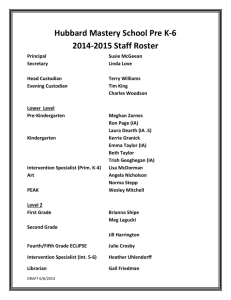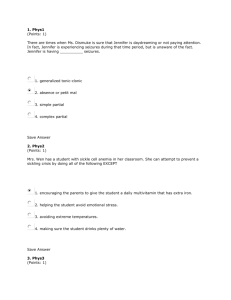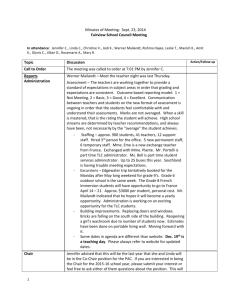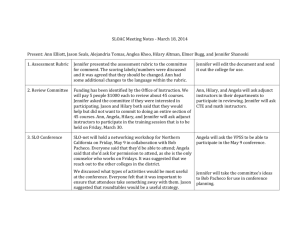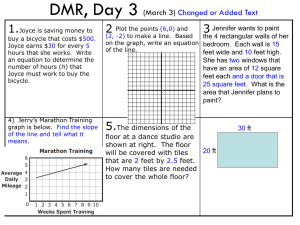Leadership Training Case Studies
advertisement
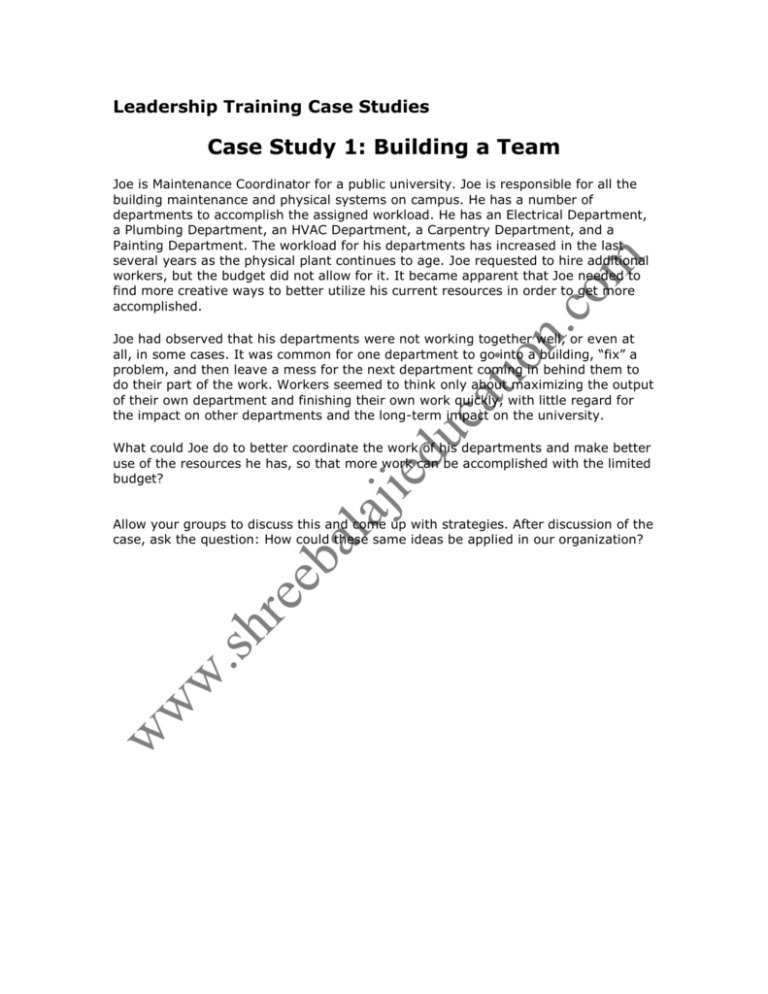
Leadership Training Case Studies Case Study 1: Building a Team Joe is Maintenance Coordinator for a public university. Joe is responsible for all the building maintenance and physical systems on campus. He has a number of departments to accomplish the assigned workload. He has an Electrical Department, a Plumbing Department, an HVAC Department, a Carpentry Department, and a Painting Department. The workload for his departments has increased in the last several years as the physical plant continues to age. Joe requested to hire additional workers, but the budget did not allow for it. It became apparent that Joe needed to find more creative ways to better utilize his current resources in order to get more accomplished. Joe had observed that his departments were not working together well, or even at all, in some cases. It was common for one department to go into a building, “fix” a problem, and then leave a mess for the next department coming in behind them to do their part of the work. Workers seemed to think only about maximizing the output of their own department and finishing their own work quickly, with little regard for the impact on other departments and the long-term impact on the university. What could Joe do to better coordinate the work of his departments and make better use of the resources he has, so that more work can be accomplished with the limited budget? Allow your groups to discuss this and come up with strategies. After discussion of the case, ask the question: How could these same ideas be applied in our organization? Possible answers (for the Trainer or Facilitator). Joe could: • Have each department select a team leader to represent them • Call a meeting of all team leaders, share his budget numbers with them, and explain that they will be expected to work together more closely • Have each team leader identify what he could do to help each of the other departments • Continue to hold weekly meetings with team leaders so they get to know each other better, to share information, and to hear requests from each department for what they could use from others • Begin cross-training people in more than one trade in order to promote sharing of available workers between functions when the workload permits this Case Study 2: Poor Interpersonal Skills Jennifer is the Accounting Department manager for a regional chain of convenience stores. Jennifer is an accounting “superstar.” She has a bachelor’s degree, recently passed her CPA exam, and is really exceptional in her accounting knowledge. She was so good, in fact, that she was promoted to department manager in her previous company after only two years on the job. She has been at her current company for ten months. She has implemented two accounting procedural changes that have streamlined the work and resulted in cost savings for the company. She reports to the CFO, and he is concerned about Jennifer, despite her obvious talents. There is no denying that she has had a positive impact, but Jennifer is not fitting in so well. Jennifer is a poor communicator and seems to have alienated quite a few of her peers and her employees. She is often aloof and distant, and her usual way of motivating performance is to simply dictate what will be done and expect compliance with her orders. She has good ideas but has little ability to present them well or to work as part of a team. You are Jennifer’s CFO, and you believe you can coach Jennifer. How would you approach her and what would you say? What issues would you work with her on? How would you hold Jennifer accountable for improvement on the issues you identified? For the Trainer or Facilitator The CFO could: • Make an appointment with Jennifer to talk privately • Offer specific and detailed feedback and observations about what he/she has seen that is of concern. Be direct but kind; • Explain why her methods may be of concern and the impact they are having on others • Identify a maximum of three change goals to which Jennifer will agree • Set specific behavioral objectives and ask her to document what she does in regard to each goal • Agree to meet again (weekly?) to discuss progress • Consider assigning Jennifer an in-house mentor in another department if available or securing the services of an outside coach to help train her in and encourage practice of human relations skills • Let her know that her performance appraisals will reflect how she is performing in her leadership role in addition to her accounting role • Be a good role model for building teamwork and collaboration Your group may think of additional appropriate things that will help improve Jennifer’s performance. Case Study 3: Integrating Teams After Downsizing Because of downsizing and layoffs at his regional insurance office, Pascal got a new department to manage. Previously he had managed the claims department for auto insurance but now he has been assigned to manage the homeowners insurance claims department as well. Both departments were hit by the recent layoff and are still reeling from those changes. Now he has to merge both departments into one unit. He also had a lot to learn because it has been many years since he worked in homeowners insurance claims. You are Pascal, and you need to understand and unify two separate departments into one entity. What would you do to help forge a strong and unified team in the claims area for your company in the days and weeks to come? For the Trainer or Facilitator Pascal could: • Hold regular meetings with all employees (weekly or even twice-weekly to begin) • Meet with his new employees individually to get to know them better • Ask questions of people about what resources they need, what’s holding them back, and listen carefully to their ideas • Ask questions, observe, and learn new procedures from the homeowners claims area with which he is less familiar • Network better with new employees, customers, and vendors • Ask each of his separate areas to present “mini-training” sessions to the other area to increase the depth of general knowledge in both areas • Create cross-functional teams whenever possible to work on specific problems in order to promote additional understanding and teamwork Your group may think of additional appropriate things that will help unify these two functions.

